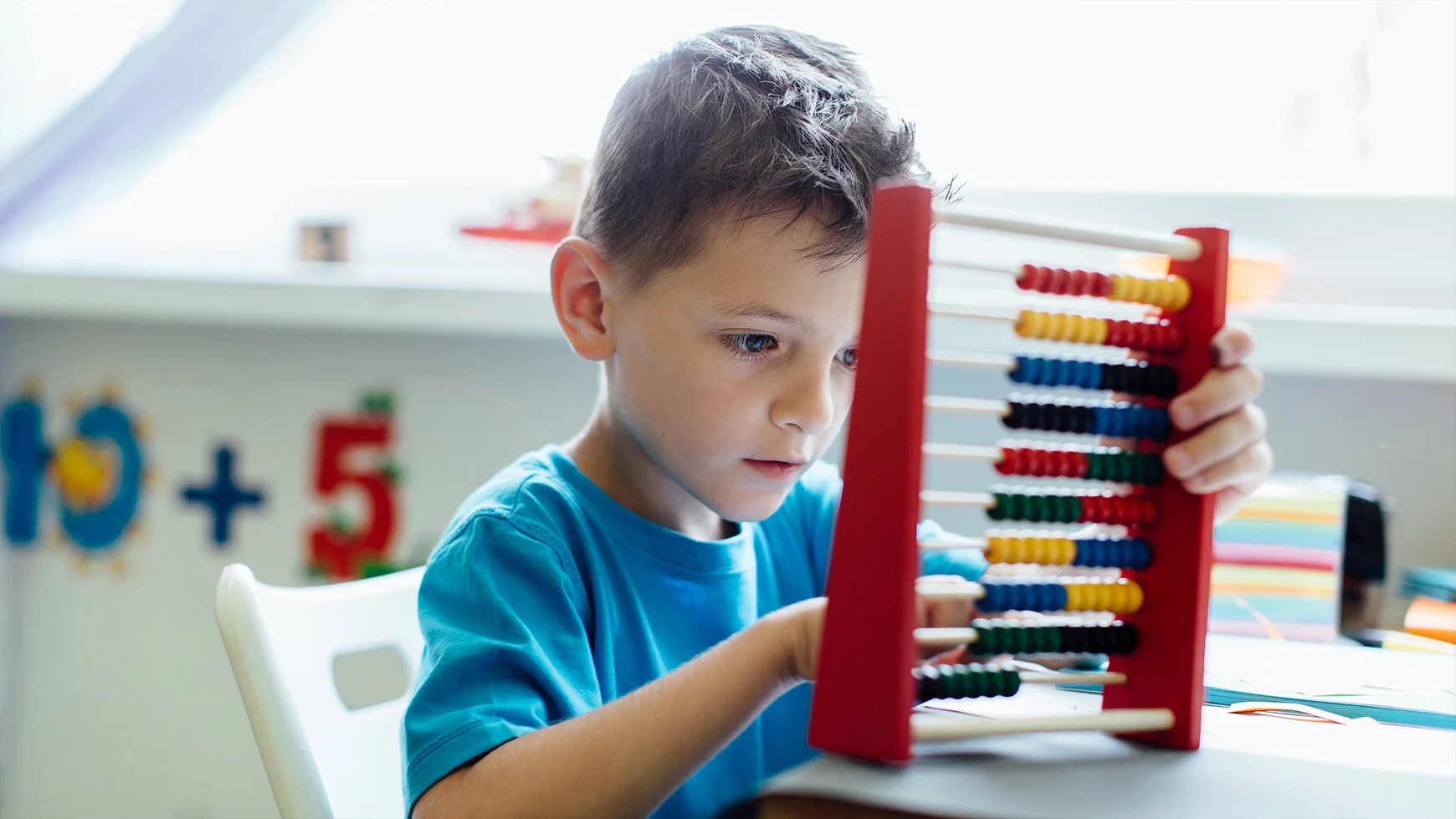Learning and thinking differences that cause trouble with math

At a glance
Many kids and adults struggle with math.
Trouble with math can be a sign of learning and thinking differences, like dyscalculia.
Finding out what’s causing your child’s struggles can help you find the right strategies to help your child get better at math.
Many people struggle with math, and they can struggle with it for different reasons. When it comes to kids, some simply need more time and practice to “catch up.” But trouble with math can also be a sign of common learning and thinking differences.
Some learning and thinking differences can impact math in ways that look similar on the surface. But they may require different strategies for kids to make progress and improve at math.
How dyscalculia can affect math
What it is: Dyscalculia is a learning difference that involves trouble with number sense. This can make it hard to understand what numbers mean or how to use numbers to solve problems. It also makes it hard to compare quantities or concepts like biggest vs. smallest. You may hear dyscalculia referred to as “math dyslexia,” even though dyscalculia and dyslexia aren’t the same thing.
The math connection: Some kids with dyscalculia may understand the logic behind math, but have trouble mastering basic math facts, like 2 + 4 = 6.
They may struggle to recognize patterns and sort items by size, shape, and color. They can also have a hard time reading clocks, graphs, or other visual representations of math concepts. See a list of more signs of dyscalculia.
Strategies to try:
Boost number sense through fun activities that use math — like baking.
Explore software, Chrome tools, and other technology to help with math.
How dyslexia can affect math
What it is: Dyslexia is a learning difference that makes reading hard. Kids with dyslexia may also have trouble with reading comprehension, spelling, writing, and math.
The math connection: Dyslexia can make it hard to understand and solve word problems. Many number words like “eight” have irregular spellings that can’t be sounded out. Word problems also often use people’s names, which can be tricky to read.
Some kids with dyslexia may reverse letters and numbers. This isn’t a problem with vision. It happens because struggling readers aren’t sure which direction the symbols should face. Poor memory can also lead to transposing or switching the order of the numbers. See a list of more signs of dyslexia.
Strategies to try:
Read directions and word problems out loud to your child and review key terms before starting an assignment.
Encourage your child to talk through word problems. Get your child to reason out loud what the problem is asking for, then say the equation or number sentence before writing it down.
Check out a fun game to prime your child for math homework.
How ADHD can affect math
What it is: ADHD is a common condition that makes it hard to pay attention. ADHD also affects planning, organizing, working memory and other skills called executive functions.
The math connection: Kids with ADHD may understand the math, but make mistakes because they have trouble staying focused.
They may have a hard time remembering math rules and formulas. They may not complete math problems because they can’t remember all the steps. They may also impulsively rush through math problems without checking their work. Explore more signs of ADHD.
Strategies to try:
Review the times tables and other math facts often.
Read through a word problem once and then circle the important details while reading it again. Highlight different operations in different colors.
Ask the teacher for notes that outline every step required to complete math problems.
Use graphic organizers for math to help stay organized when solving multi-step problems.
How visual processing issues can affect math
What it is: Trouble processing visual information. This is not the same thing as vision problems. Difficulty with visual processing can’t be corrected with glasses.
The math connection: Kids who struggle with visual processing may confuse similar-looking symbols and numbers. They may use the wrong ones or in the wrong order. They may have trouble lining up columns of numbers. They may also struggle to recognize patterns or make sense of graphs or charts.
Strategies to try:
Be explicit about the differences between numerals, like pointing out that “the circle is at the bottom of the 6 and at the top of the 9.”
Reduce visual clutter by using blank sheets of paper to cover the “busy” parts of worksheets. This can help keep the focus on one problem at a time.
Use graph paper to line up number columns.
How trouble with motor skills can affect math
What they are: Developmental coordination disorder (DCD) affects motor skills like handwriting. (DCD is sometimes referred to as dyspraxia.) Dysgraphia can also make it hard for kids to write neatly.
The math connection: Kids with DCD and/or dysgraphia may have slow and messy handwriting. They may have trouble writing numbers or lining them up correctly. They may also struggle to write sentences that explain their reasoning.
Strategies to try:
Use large-square graph paper to line up numbers in math problems. Another way to help work in columns is to turn lined notebook paper sideways.
Increase the size of coordinate grids or use online graphing tools to help with math in middle school and high school.
Explore free apps like ModMath that can help math students who struggle with writing.
How nonverbal learning disabilities can affect math
What it is: Nonverbal learning disabilities (NVLD) involve trouble with social skills and abstract thinking. Visual-spatial perception is a key issue with NVLD that can affect math skills.
The math connection: Visual-spatial difficulties can make it hard to recognize patterns or relationships between things. This includes trouble with generalizing. Kids with NVLD might not see what’s similar about a set of math problems.
Working with fractions and geometric shapes can be especially hard for kids with NVLD. Word problems can also be a big challenge. Kids with NVLD may have the math skills they need but struggle to apply them in novel problem-solving situations.
Strategies to try:
Fill out a sample problem at the top of the worksheet.
Get students to describe all the steps needed to solve the problem.
Talk about how the next problem is similar and how it’s different.
Give reminders about strategies used to solve similar problems.
A note about math anxiety
Kids with math anxiety can get so worried about doing math that they do poorly on math tests. Learn the difference between math anxiety and dyscalculia. And read a blog post by a college student about the strategies she uses to help with dyscalculia and anxiety.
Ready for more information? Explore seven ways kids who learn and think differently can get tripped up by the same math problem — and what you can do to help.
Key takeaways
Kids can get tripped up by the same math problem in different ways and for different reasons.
Math anxiety can affect how kids do on math tests.
Having trouble with math doesn’t mean kids aren’t smart. It means they need more support to make progress.





